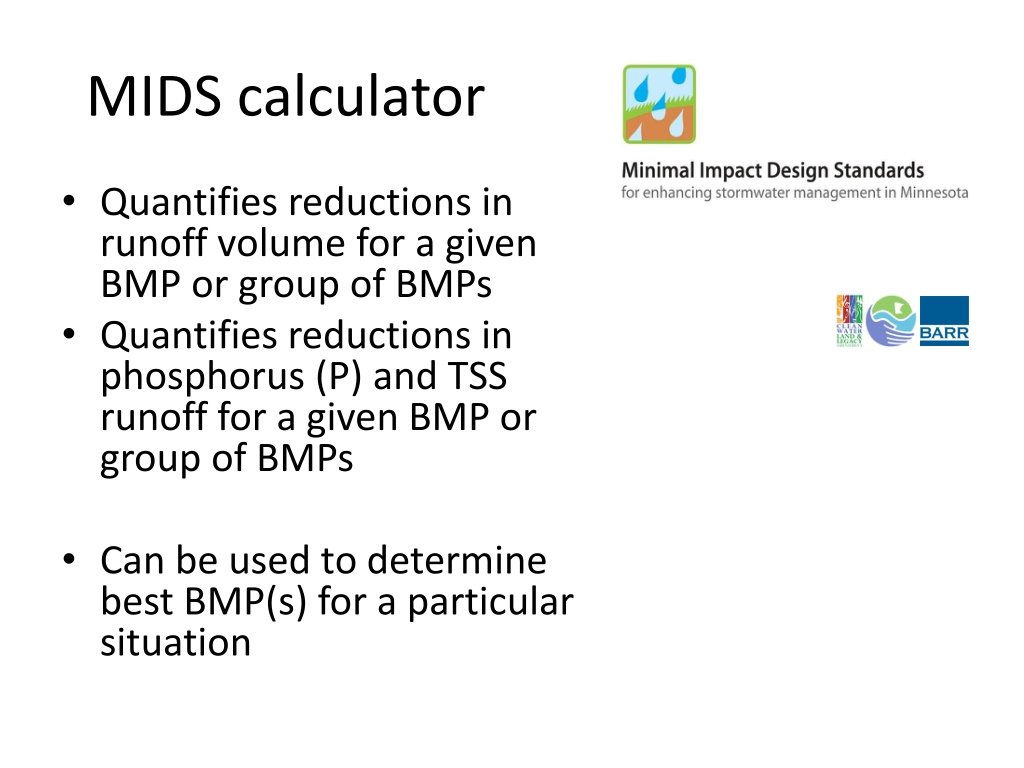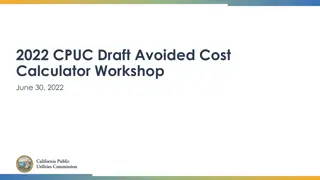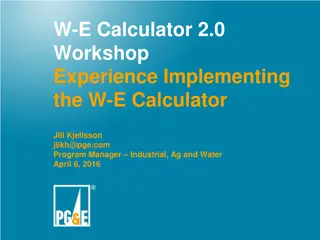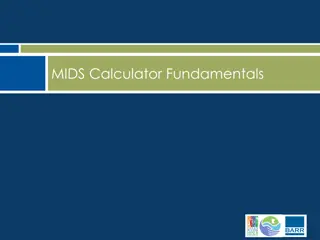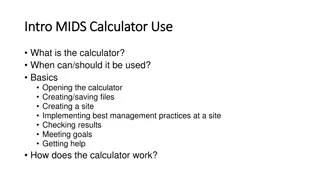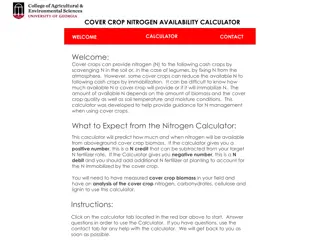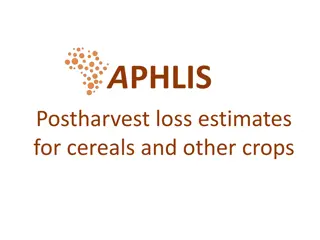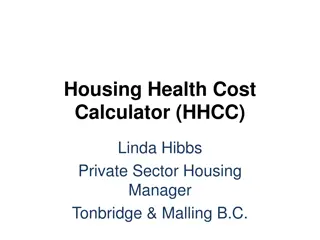MIDS calculator
Quantify runoff volume reductions and phosphorus/TSS removal for BMPs using the MIDS calculator. Understand how it works, why it's essential, and explore various BMP options like bioretention basins, permeable pavement, and more. Address specific scenarios to optimize BMP selection for managing stormwater effectively.
Download Presentation

Please find below an Image/Link to download the presentation.
The content on the website is provided AS IS for your information and personal use only. It may not be sold, licensed, or shared on other websites without obtaining consent from the author.If you encounter any issues during the download, it is possible that the publisher has removed the file from their server.
You are allowed to download the files provided on this website for personal or commercial use, subject to the condition that they are used lawfully. All files are the property of their respective owners.
The content on the website is provided AS IS for your information and personal use only. It may not be sold, licensed, or shared on other websites without obtaining consent from the author.
E N D
Presentation Transcript
MIDS calculator Quantifies reductions in runoff volume for a given BMP or group of BMPs Quantifies reductions in phosphorus (P) and TSS runoff for a given BMP or group of BMPs Can be used to determine best BMP(s) for a particular situation
Why do we need to know these? Meet regulatory requirements Meet water quality targets Choose most efficient/effective BMP
How does it work? Calculate the amount of stormwater runoff, P, and TSS entering the BMP Different BMPs have removal efficiencies based on research and monitoring Calculator does a mass balance on volume, P, and TSS coming in, being removed, and returning as runoff
Overflow volume 0% TSS, Particulate P (PP), and Dissolved P (DP) reduction Infiltration BMPs 100% TSS, PP, DP reduction Filtered volume 60% TSS. Particulate P (PP), and Dissolved P (DP) Calculated based on media Filtration BMPs w/ some infiltration 100% TSS, PP, DP reduction
Bioretention Basin Green Roof Infiltration Basin Permeable Pavement Swale Side Slope Wet Swale Swale Main Channel Swale With Underdrain
Impervious Disconnect Harvest and Reuse Stormwater Pond Sand Filter Stormwater Pond w/ Filter Bench Other Wetland Other
Examples 2 acre site 1 acre impervious 1 acre pervious turf B soils Zip = 55105 Goals Infiltrate first 1.1 inches off impervious surfaces Capture 80 percent of Total P
Problem 1: Same as example but pick one of these conditions Have to minimize surface space of the BMP the impervious is parking lot The full acre of impervious is a linear road You are on a C soil the impervious is a building roof
Problem 2 10 acre site, half is pervious forest and half is impervious Impervious: 1 acre on A soils, 2 acres on B soils, 2 on D soils Pervious acreage: same as impervious Goal is to meet the MN Construction SW Permit infiltrate first 1 inch off impervious surfaces Hints: draw a site map; you ll probably need or want multiple BMPs; include treatment train on your map Pick your zip code
